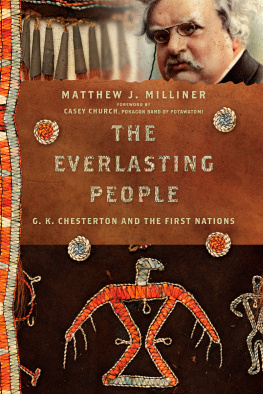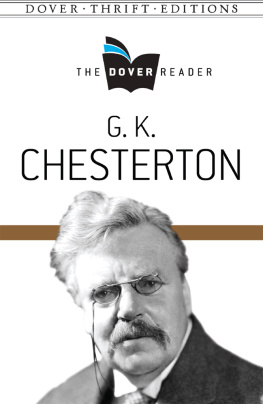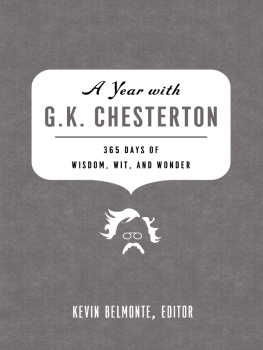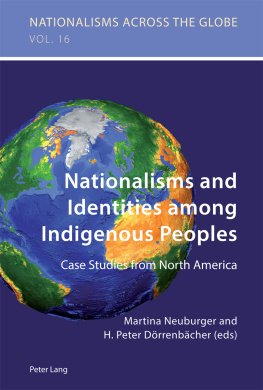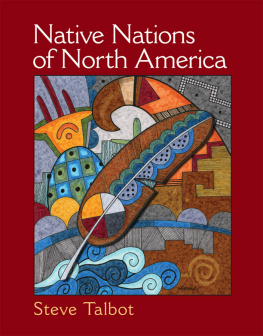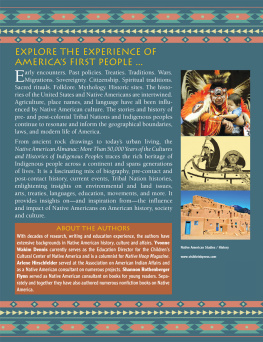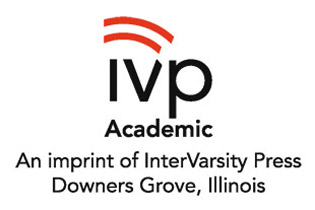Sommaire
Pagination de l'dition papier
Guide
HANSEN LECTURESHIP SERIES
MATTHEW J. MILLINER
THE
EVERLASTING
PEOPLE
G. K. CHESTERTON AND THE FIRST NATIONS
FOREWORD BY
CASEY CHURCH
POKAGON BAND OF POTAWATOMI
InterVarsity Press
P.O. Box 1400, Downers Grove, IL 60515-1426
ivpress.com
2021 by The Marion E. Wade Center
All rights reserved. No part of this book may be reproduced in any form without written permission from InterVarsity Press.
InterVarsity Press is the book-publishing division of InterVarsity Christian Fellowship/USA, a movement of students and faculty active on campus at hundreds of universities, colleges, and schools of nursing in the United States of America, and a member movement of the International Fellowship of Evangelical Students. For information about local and regional activities, visit intervarsity.org.
Scripture quotations, unless otherwise noted, are from the New Revised Standard Version Bible, copyright 1989 National Council of the Churches of Christ in the United States of America. Used by permission. All rights reserved worldwide.
The publisher cannot verify the accuracy or functionality of website URLs used in this book beyond the date of publication.
Cover design and image composite: David Fassett
Images: Mexican textile: Gabriel Perez / Moment / Getty Images
landscape: Maksim Tarasov / EyeEm / Getty Images
shoulder bag: The Charles and Valerie Diker Collection of Native American Art,
Gift of Charles and Valerie Diker, 2019
brown leather background: Yaorusheng / Moment / Getty Images
speckled paper background: Zakharova_Natalia / iStock / Getty Images
ISBN 978-1-5140-0033-5 (digital)
ISBN 978-1-5140-0032-8 (print)
This digital document has been produced by Nord Compo.
TO THE ORIGINAL AND EVERLASTING PEOPLE
OF LANDS I HAVE CALLED HOME.
W HEN ASKED TO WRITE A FOREWORD to Dr. Matthew Milliners book, I accepted because I was intrigued by the title of the series of lectures that were the original basis for this publication: Turtle Island Renaissance. Turtle Island is the name for the land of my people, the Anishinaabe, the Indigenous inhabitants of the Great Lakes region. In each of the chapters of his book there are references to my Indigenous religious, spiritual, and cultural beliefs and the community ways of my family and relations. Having heard Milliner speak before at various events, Ive come to enjoy his enthusiasm when he presents on topics dealing with Native Americans. This book has a special relevance to many aspects of my life as a Potawatomi person growing up in the southwest Michigan woodland area. Milliner takes a look at the mythology, religion, culture, and traditions of my Anishinaabe people in a unique way. Not having studied the writing of G. K. Chesterton in the manner Milliner has for the focus in this book, I had to do some investigation. Dr. Milliners understanding of G. K. Chestertons perspective and the parallels he draws between his many works and the Native American people are interesting, making this project a unique addition in learning more of Native American history, culture, and religion in a fresh, new way.
This book is more than a systematized introduction to American Indian thinking. In large part, The Everlasting People is a critical reflection on Western thought and culture and American Indian intellectual and religious beliefs through a Euro-American lens. As a result, the books greatest contribution is that it seriously shakes things up in standard approaches to research. Dr. Milliner again demonstrates the inadequacy of various Western approaches of research. His methods offer what some might find to be a shocking or unique way of looking at the various evidence found in Native American studies, maybe not to the non-Indigenous researcher but mostly to professionals like myself, an Indigenous researcher and minister. Milliner has a deep sensitivity to the pain caused by years of trauma inflicted on the Natives of North America by White settlers and their Christianity. It is this depth of feeling that I sense in his look at the history of Indigenous peoples faith. His understanding of the atrocities done to the North American Indigenous people through massacres, relocation, and being forced to make dramatic life-and-death changes to their way of life is reflected in his research.
Milliners chapter The Sign of Jonah gives the reader a well-researched look at an aspect of Native American spirituality most people might overlook because of their limited view of the beliefs and artistic nature found in the culture and traditions of the Native American. His perspective on Native rock art draws deep insights for theologians and students to ponder. His unique look at the cave rock paintings throughout the Midwest takes us further down the road to seeking another way to view the artistry depicted on the rock walls as a living expression of the Indigenous peoples beliefs in mythical creatures. I particularly enjoyed his look at the mythology of the Great Lakes peoples belief in the Underwater Panther, also called the Mishipeshu, and other spiritual beings that have both malevolent and benevolent traits recognized and respected by the Natives.
Dr. Milliners more philosophical/theological research is not limited in its effect only to Native American peoples but can be very instructive to those who function mostly in the Western intellectual tradition. I truly expect this and other works by Dr. Milliner will contribute to the ongoing study of Native Americans and will become increasingly important to not only secular studies but also to the religious and theological studies on Indigenous people.
As a Native American from the tribe called the Potawatomi, originally from the Michigan/Indiana region, I grew up with these beliefs of the underwater creatures that researchers call myths. My family and other families lived the stories that Matthew relates of moving through stages of faith toward a White mans version of Native Christianity. As a missiologist, I view many aspects of Native beliefs and culture as entry points to moving the Native toward Christian belief. I respect Matthews desire to research Native art and mythology and interpret it for his particular audience, and it is my desire like Matthews to find ways to share the life-changing message of Jesus Christ to the world. It is my hope as new approaches to research are ventured and new models are implemented that God will be known more fully among Indigenous and non-Indigenous peoples of the world.
In many traditional Native ways, it is protocol to introduce oneself and their connection to others in the community. The following is written for context to my life and community as it relates to the subject matter of the book. These are topics connected to the Anishinaabe people and specifically to my familial heritage and story: I am Casey Church, a member of the Pokagon Band of Potawatomi Indians of Southwest Michigan; I am of the Bear (Makwa) clan on my mothers side (the late Mary Church [Pokagon]), a member of the Pokagon Band of Potawatomi. Her father was the late Peter Pokagon, Great Uncle of Chief Simon Pokagon, and my Great, Great, Great Grandfather was Chief Leopold Pokagon. I am also of the Crane (Jijak) clan on my fathers side (the late Leonard H. Church), of the Huron Band of Potawatomi, the son of Sarah Church (Madewis) of the Huron Band of Potawatomi. My Indian name is Ankwawango Hole in the Clouds. I am called an Ogitchida, meaning warrior, for my service as a Sergeant in the United States Marine Corps. Religiously, I am a Banai, meaning spiritual leader. I am further a Licensed Minister with the United Methodist Church. Culturally, I am a Northern Traditional DancerEagle Whistle Carrier. I am married to Lora Church (Morgan), a Navajo Native of Albuquerque, New Mexico, and we raised five children together.

